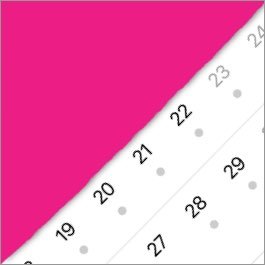IMPROVISING IN A BLUES STYLE
By JJ Wheeler – musician, teacher and record producer
Blues music grew from the experiences of the African-American communities in the deep south of the USA in the late 1800s, often featuring tales of despair or hardship. Mixing African song with spirituals, work songs and European folk influences, the style often uses simple forms and common chord structures, such as the 12-bar blues harmonic sequence, or the AAB form.
In the second half of the 1900s, blues music was adopted and developed by mainstream Americans and Europeans. We still hear aspects of the blues style in most forms of popular music today, including jazz, pop, folk, dance, rock and country.
Early blues music, as well as many subsequent styles, is often associated with acoustic guitar and vocals, with singers such as Robert Johnson and Bessie Smith widely recognised as pioneers in this style. Use of slide guitar is also synonymous with the style. Later forms of blues developed using the electric guitar, with artists such as Eric Clapton and the more boogie-woogie orientated pianist Jools Holland, performing blues music and its sub-genres in a more contemporary manner.
Improvising in a blues style
The first thing for any instrumentalist or vocalist to think about is whether the music is ‘straight’ or ‘swung’ (with a triplet feel, like the song ‘Humpty Dumpty’). This will have a huge impact on how you perform your improvisation rhythmically, and should be taken into account immediately. Blues music can be performed both ways, although older styles often have more of a swung feel. Sometimes, even on straight-feel blues, singers and instrumentalists like to add a slight ‘swing’ to their rhythms, to create a laid-back, bluesy feel. This takes practice, and it’s worth listening to recordings of how artists do this, such as Chris Rea in this live performance of ‘Road to Hell’.
Melodically, it is a good idea to check out the ‘blues scale’ as a basis for improvisation. Unlike a normal major or minor scale, the basic version of this focuses on just six notes of the scale, taking the key of the song and using the minor pentatonic (1-flat 3-4-5-flat 7), then adding the diminished 5th into the mix. For example, for a blues in C, we might focus our attention on the notes of: C (1st degree of the scale), Eb (flat 3), F (4), F#/Gb (diminished 5th), G (5th) and Bb (flat 7). Try running up and down this scale, playing arpeggios using these notes, then creating melodies and lines jumping around different points of the scale. It’s also quite common to flicker between two notes of the scale which are only a semi-tone apart. Using the above example in the key of C, this might be the G and the F#.
When creating an improvised accompaniment, it is worth making sure you know the common extensions and harmonic trends of blues music. For example, there is a lot of use of minor chords and dominant 7ths (meaning the flat 7, a whole tone below the root). We also sometimes come across the diminished chord, which uses both the flat 3 and the b5. Make sure you understand these chord symbols, how to play them correctly on your instrument, and the chord-scale relationship. A common accompaniment technique used in many blues songs for guitar and keyboards is the shuffle accompaniment. It’s worth checking out how this works and applying it to all twelve keys.
In terms of basic stylistic traits, blues music tends to be quite simple, with the aim of conveying a tale of sorrow, hardship or regret as clearly as possible. The style generally has quite a laid-back feel, although more up-beat variations occur in sub-genres such as boogie-woogie. Use of techniques such as slides, slurs, note-bends and breathy, softer tones can create an effective blues sound.
Example improvising videos
Watch videos with session musicians and Rock & Pop examiners JJ Wheeler and Tom Fleming, and session musicians Harry the Piano, Sam Edgington and Brendan Reilly for tips and ideas on how to improvise in a blues style:
Influential artists
Despite dying at the tender age of 27 in 1938, Robert Johnson is widely recognised as one of the most influential voices of the early blues style. Usually performing solo on acoustic guitar and vocals on street corners, in bars or at night dances, he gained little exposure in his lifetime, but has since become revered following re-issue of his recordings since 1961. He is known as a master of the Mississippi Delta blues and his recordings of songs such as ‘Crossroad’, ‘Me and the Devil Blues, and ‘Sweet Home Chicago’ have influenced generations of blues and popular music artists since.
B.B. King, born in 1925, is described as the ‘King of Blues’. Over his career he developed one of the world’s most identifiable guitar styles and was ranked sixth in Rolling Stone magazine’s 2011 list of all time guitarists. His soloing style was described by Edward Komara as ‘a sophisticated style of soloing based on fluid string bending and shimmering vibrato that would influence virtually every electric blues guitarist that followed’. Hits such as ‘The Thrill Is Gone’, ‘How Blue Can You Get’ and ‘Lucille’ are just a few examples of his virtuoso guitar playing and singing. B.B. King died in May 2015.
In the later 20th century, blues was adopted and fused with rock to popular acclaim – particularly by British artists such as Eric Clapton. Guitarist/vocalist Clapton came to fame with the bands The Yardbirds and Cream in the 1960s and 70s. Also influenced by genres such as reggae and rock, his hits such as ‘Layla’, and ‘Tears In Heaven’ hold worldwide attention. Clapton still tours to sell-out arenas and stadiums and received a CBE from the Queen for services to music in 2004.
Blues Spotify playlist
We've pulled together a playlist of blues songs that appear on our Rock & Pop 2018 syllabus as well as other great blues songs for further inspiration and ideas. Follow our Spotify profile and playlists to easily find the playlists whenever you want to have a listen.
About JJ Wheeler
JJ Wheeler is a professional touring and session drummer and percussionist, teacher and record label producer. He has worked with artists such as Celine Dion, worked on West End musicals including The Bodyguard and regularly performs in a range of bands across the UK and abroad. JJ runs workshops, clinics and masterclasses all over the world, and is also a Trinity Rock & Pop examiner







